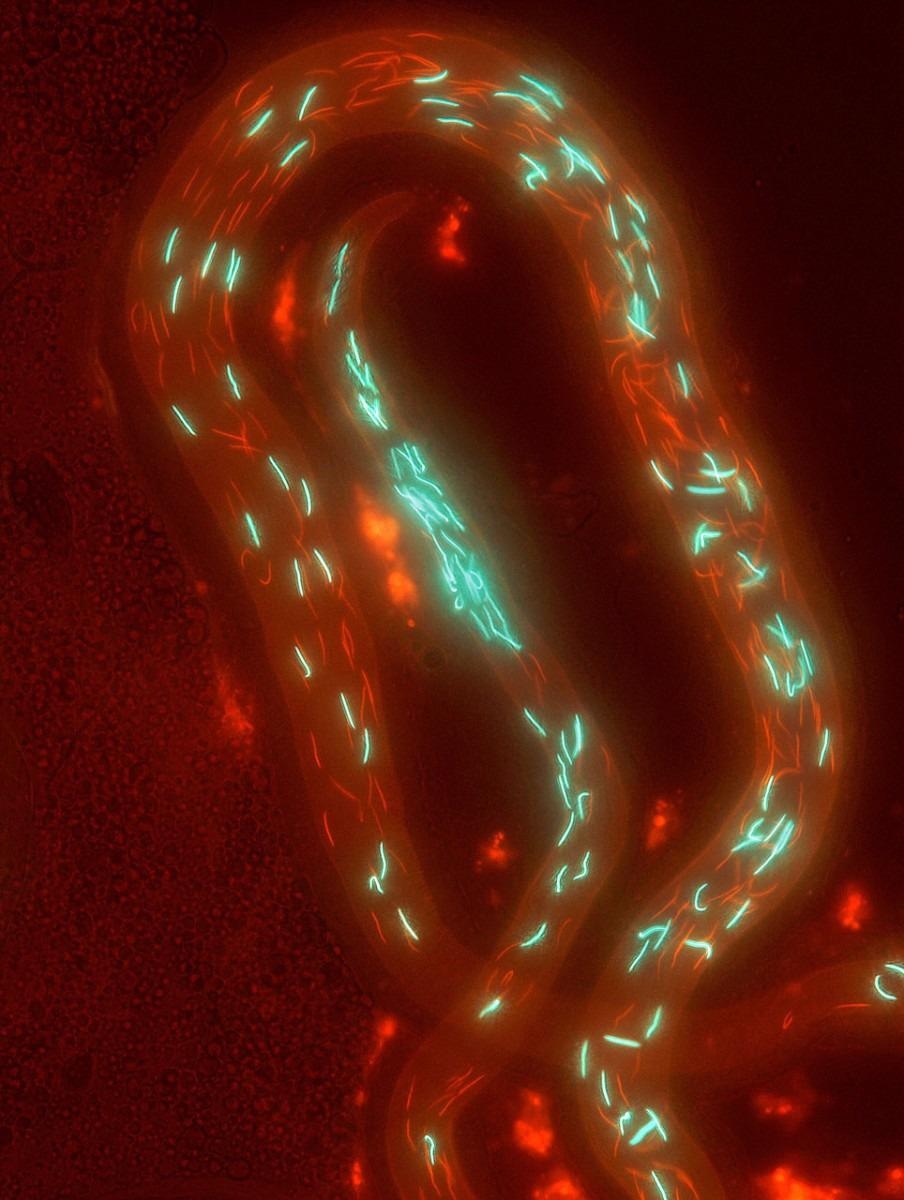Reviewed by Danielle Ellis, B.Sc.Mar 25 2022
According to recent research on fruit flies, the sperm becomes half feminine after mating, which was previously thought to be purely male.
 Fruit fly sperm with heads labeled with a red or a green fluorescent protein, swimming inside a female fruit fly’s reproductive tract. Image Credit: Scott Pitnick/Syracuse University.
Fruit fly sperm with heads labeled with a red or a green fluorescent protein, swimming inside a female fruit fly’s reproductive tract. Image Credit: Scott Pitnick/Syracuse University.
By four days after a sperm enters a female, about 20% of its proteins are female-derived, according to a study published on March 7th, 2022, in the journal Proceedings of the National Academies of Science.
The researchers revealed that seminal fluid proteins interact with sperm within the female first, followed by female proteins.
The researchers believe that some of the female proteins that bind to sperm are metabolic enzymes, which leads them to hypothesize that they could be boosting the sperm’s vitality, however additional research is needed.
In flies, and in many other organisms, sperm live for many days [inside the female], so the female may be providing enzymes they need to keep them nourished and healthy.”
Mariana Wolfner, Study Senior Author and Professor, Molecular Biology and Genetics, Cornell University
Wolfner is also a Stephen H. Weiss Presidential Fellow in the College of Arts and Sciences.
Female fruit flies’ sperm have been reported to survive for at least 10 days, covering a full generation.
Members from each study lab examined sperm from hundreds of mated female flies in conjunction with co-senior authors Scott Pitnick, professor of biology, as well as Steve Dorus, assistant professor of biology, both at Syracuse University’s Center for Reproductive Evolution. The researchers employed the same strain of flies across the labs and replicated the tests in the same way.
After mating, sperm were excluded from the female at different phases: 30 minutes after mating, once sperm blended with seminal fluid proteins and proteins obtained from the female reproductive tract in an organ called the bursa; two hours after mating, and again four days later, when sperm are stored in specialized organs inside the female.
After that, each sperm sample was cleaned in a buffer solution to eliminate any proteins not securely linked to the sperm. The proteins linked with the sperm were then identified via mass spectrometry, a procedure in which proteins were broken down into minute fragments, and their weight and charge are carefully determined. Experts can recreate which proteins were present in the sample using these data.
Over the four days of sampling, they found about 2,000 proteins in the sperm, with roughly 1,000 of them being intrinsic to the sperm. 122 seminal fluid proteins are discovered to connect to the sperm shortly after mating. The leftover sperm-associated proteins were believed to have come from the female, according to the researchers.
Dorus and Pitnick lab members used heavy isotopes to designate females so they could precisely identify female-derived proteins linked to sperm. Most seminal fluid proteins were vanished by day four, but the researchers discovered 328 female-derived proteins associated with the sperm, accounting for about a fifth of the total sperm proteins.
As a result, this study demonstrated that, while sperm originates from a male and includes male DNA and cellular features, once within the female, they are no longer male.
If the female proteins act to stabilize sperm, you can imagine situations where reproduction could fail if a female failed to produce one of those important proteins.”
Mariana Wolfner, Study Senior Author and Professor, Molecular Biology and Genetics, Cornell University
Moreover, evolutionary biologists have been recognized to depict reproduction as male sperm fighting a hostile environment inside the female reproductive tract, but Wolfner explained that if sperm adopt female elements, the evolutionary argument becomes quite nuanced and probably involves aspects of molecular continuity and cooperation.
Source:
Journal reference:
McCullough, E. L., et al. (2022) The life history of Drosophila sperm involves molecular continuity between male and female reproductive tracts. Proceedings of the National Academies of Science. doi.org/10.1073/pnas.2119899119.